Are you tired of plucking pests, waging war on weeds, and losing lettuce to common garden issues?
If so, listen closely and I’ll let you in on a secret – you can reduce or eliminate some common problems with companion planting.
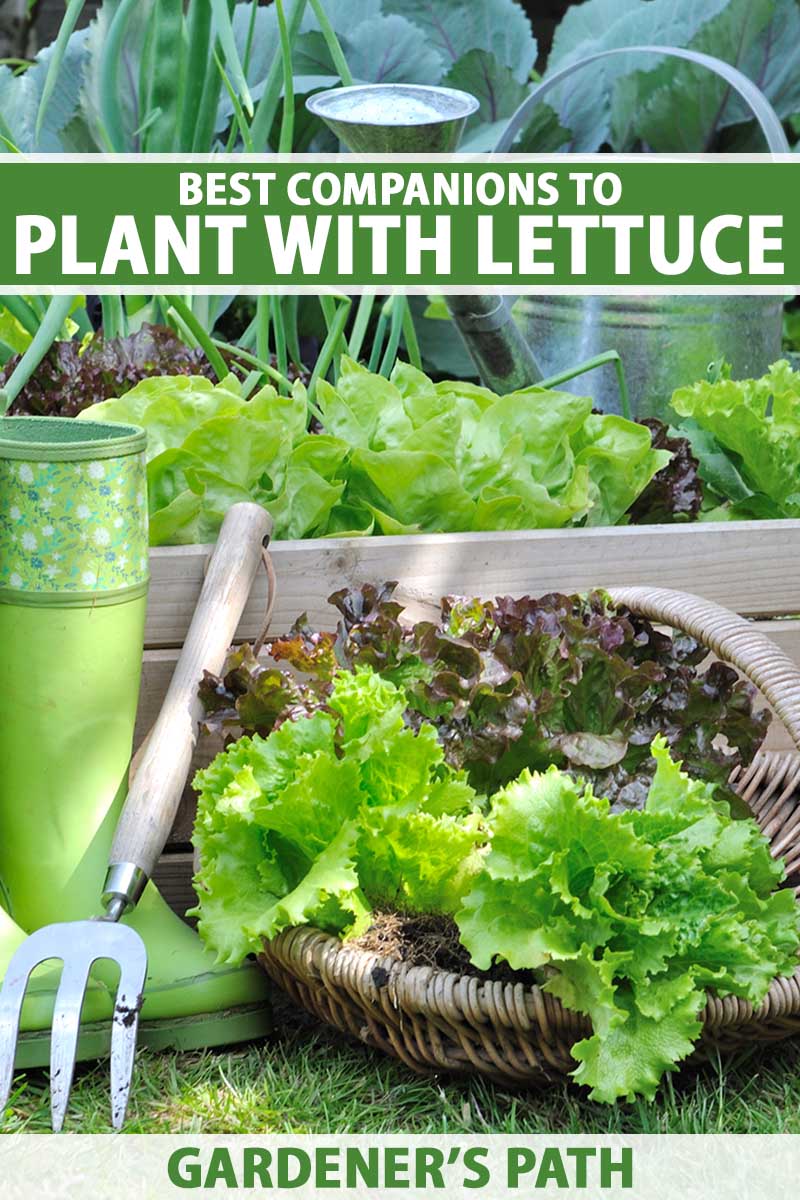
We link to vendors to help you find relevant products. If you buy from one of our links, we may earn a commission.
Fortunately, these leafy vegetables are super simple to incorporate into a companion planting plan since lettuce is a short-season crop with few strict needs. It also pairs well with many of the most common garden-variety fruits, vegetables, and flowers.
Here, I’ll provide a list of recommended companion plants for lettuce and explain the reasoning behind them, so it’s easy to understand why some crops are friends or foes.
Having this information can make it simpler to apply a plan in a variety of settings, and in conjunction with most agricultural methodologies, too.
Let’s get started! Here’s a quick overview of everything you’ll read about today:
What You’ll Learn
How Does Companion Planting Benefit Lettuce?
Before we begin, let’s take a quick look at what the term “companion planting” really means.
Polyculture or intercropping are modern terms that have the same basic meaning, although they’re often associated with certain types of gardens, such as those that employ permaculture or regenerative agriculture practices, rather than more conventional or traditional gardening.

Essentially, plants are grouped together to create the best and most supportive growing environment for all members who will share the space.
As a result, each specimen experiences benefits that improve its wellbeing and may naturally overcome its weaknesses.
Lettuce, of course, has quite the catalog of pests and diseases as well as other challenges to contend with, so it’s wise to create a plan of action that works with nature, rather than fighting against it.
Pest Control
These natural partnerships can lead to improved pest control, without the use of chemicals, by attracting predatory insect species that will feed on the caterpillars, worms, and slugs that can ravage your lettuce crop.
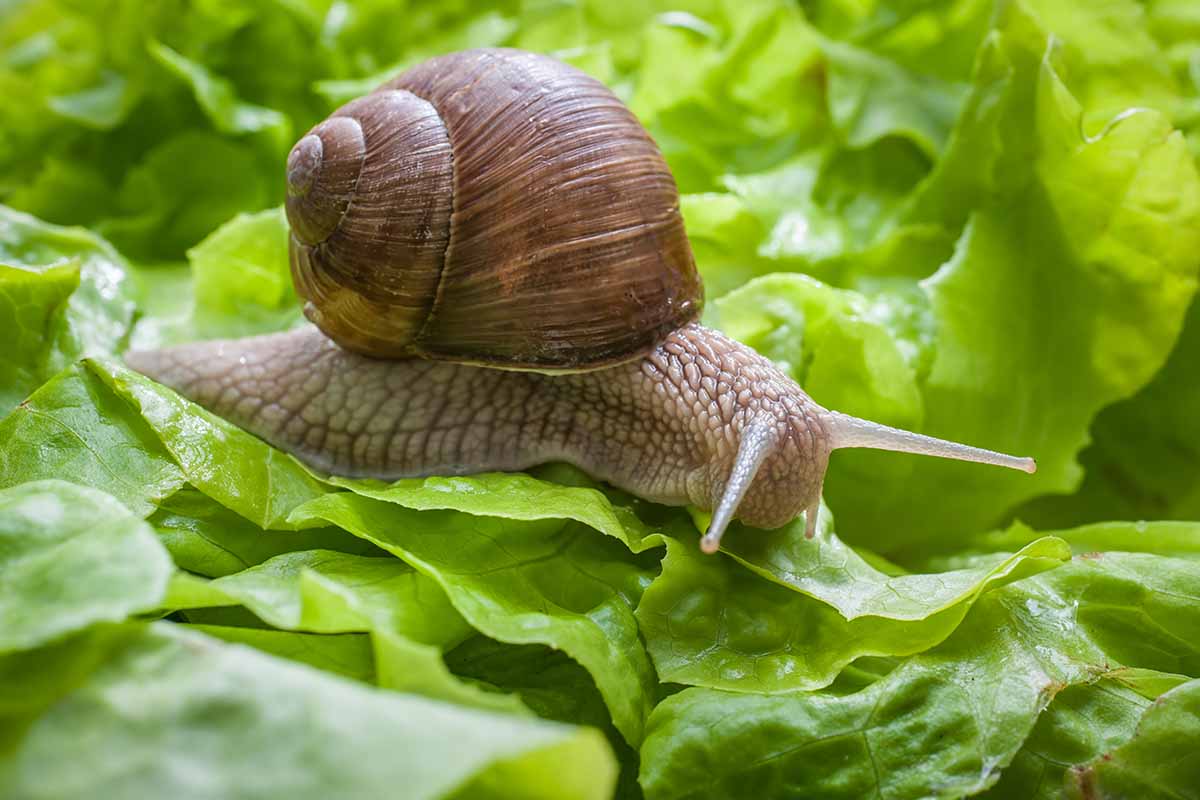
Biological pest control methods can also include repelling unwelcome insects using scents and colors, and creating confusing patterns to make accessing the potential food source difficult.
Trap cropping is another useful tool in reducing pest damage in the lettuce bed.
Environmental Control
Lettuce can suffer damage from high heat, scorching sun, drought, and overwatering.
Intercropping can be used to reduce the likelihood that these issues will interfere with the growing season.
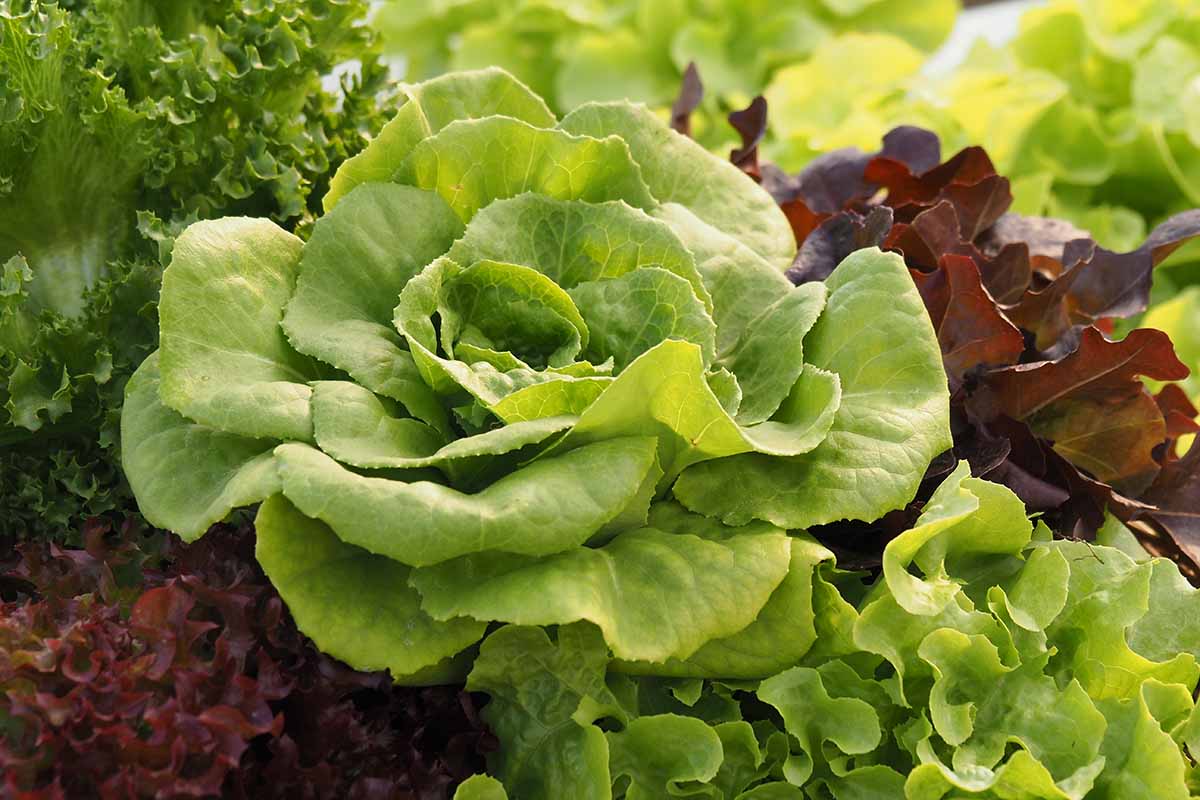
Some crops can offer boosted water retention while others may use enough water to reduce excess when necessary.
Unlike lettuce, with its small, shallow roots, species that have strong, sprawling root systems can lessen erosion.
Often, those with large root systems tend to be larger species that can cast shade to reduce sunscald or heat damage as well.
Soil Improvements
Since members of the Lactuca genus are leafy and nitrogen-loving, they can be paired with crops that aid in fixing nitrogen into the soil including many varieties of common edible legumes.
Species that aerate soil or that can be tilled under to add organic material are also great partners.
This is a brief synopsis, of course, but our extraordinarily informative guide to the science of companion planting can provide all you need to know. If you haven’t given it a read already, I highly recommend checking it out next.
Now, let’s talk about the friends and foes of lettuce.
Best Companions for Lettuce
There are so many sources of information about this planting method available that they can actually become a bit confusing.
Others might suggest that a specific crop or group isn’t a good choice to pair with lettuce, but they don’t share the reasoning that led to this conclusion.
I’ll cover the how’s and why’s here so you can feel more confident going forward.
Alliums
Members of the Allium genus include bulb-forming root vegetables such as garlic, onions, and shallots.
When you’re dicing their bulbs and scapes for use in your favorite recipes, it’s easy to understand why they might act as a deterrent.
Their strong, sometimes overpowering aromas and the gasses that they emit can be too much to take.
This is great news for lettuce, since alliums can be interplanted within rows of leafy or head types to produce smelly barriers that ward off insects like aphids and beetles, and also some herbivorous or omnivorous vertebrates, too.
Because they grow bulbous roots, they aid in breaking up hard ground as well, which helps with drainage and aeration.
‘Zebrune’ shallots are a favorite of mine because they’re mild with a slightly sweet flavor. A packet of about 55 seeds is available from Botanical Interests.
Learn more about growing alliums in our guides. And check out this article about how to use garlic for pest control.
Flowers
Adding some pops of color and forage for bees and butterflies are additional bonuses that come with using flowers as companion plants for your lettuce.
Amaranth
Members of the Amaranthus genus may produce beautiful weeping or upright clusters of blooms, but they’re also very beneficial in acting as a trap crop for insects like darkling and flea beetles, among others.
After the blooms have died off, birds will be attracted to the seeds as an excellent source of food, which leads them to your garden where they can feast on insects.
Because amaranth is not super common in the home garden, many gardeners don’t realize how large or how lovely these plants can be – or how useful!
Technically, they could be included in the grain category below as well, as the seeds are harvested for use as a food source.
Add them around the perimeter of garden beds to create an abundant buffet that many pests can’t pass up. Afterward, harvest some tender leaves to throw into the salad with your safe-and-sound lettuce, and don’t forget to say thank you for the help.
Find a packet of about 310 ‘Hot Biscuits’ seeds, with its upright tufts of caramel-colored blooms, from Botanical Interests.
Or, if you have a flair for the dramatic, love lies bleeding, with its weeping, deep pink to burgundy bloom clusters, is the epitome of the word.
Find a packet of about 360 seeds at Botanical Interests.
You can learn more about love lies bleeding here.
Calendula
Calendula (Calendula officinalis), also known as pot marigold – even though it is not a true marigold – acts as a trap crop for slugs.
These slimy fellows can be extremely destructive to all types of lettuce, among others, so any flower that reduces that risk could be counted as a savior.
Place trap plants around the perimeter of the garden to redirect potential diners. Then, harvest some of the bright blooms and leaves to add to salads, or explore their many healing qualities.
Grab a packet of ‘Pacific Beauty’ mixed calendula seeds in packets ranging from 25 grams to one pound, available from True Leaf Market.
Our guide to growing calendula provides cultivation instructions.
Marigolds
If you’re looking for a universal insect repellant, marigolds are well known as the champ in that category. They ward off many different pests, such as cabbage worms and nematodes, and pair well with most vegetable crops.
Repellent compounds, like bioactive alpha-therthienyl produced in marigold roots, exhibit nematicidal, insecticidal, fungicidal, and antiviral properties.
This full-service flower can be interplanted among rows of lettuce, used as a border, or planted en masse.
Marigolds make great chicken fodder too, which enriches their eggs, enhances coloration, and can ward off some potential health issues.
Antigua Series African Marigold, Orange
You can find packets of Antigua series African marigold (Tagetes erecta) seeds available in orange, primrose, yellow, or as a mix available from True Leaf Market.
You can learn more about growing marigolds in our guide.
Fruits and Vegetables
Bear in mind that this list isn’t exhaustive because, as I said, lettuce is a friend to many.
But it should give you an idea of the best of the best companions to choose among the most common fruit and vegetable varieties.
Carrots
Just like alliums, most root vegetables are great for breaking up and aerating soil.
Their swelling roots push the ground apart and open up space for drainage, which benefits lettuce since it won’t tolerate soggy ground.
For a fun and tasty twist on your average orange carrot, try a packet of these ‘Cosmic Purple’ seeds, instead. They’re available from Botanical Interests.
Check out our guides to growing carrots for more information.
Parsnips
As well as being a root veggie that offers the same benefits as others of its class like carrots, parsnips also attract ladybugs.
This aids in combating aphid infestations, since those cute little ladybugs are actually ruthless aphid hunters.
Packets of ‘Halblange’ parsnip seeds in a variety of sizes are available from High Mowing Seeds.
Our guide to growing parsnips has more information.
Peas
Aside from being one of the easiest and most popular crops to grow in the home garden, peas have the additional benefit of fixing nitrogen.
This works wonders for lettuce since it needs lots of nitrogen to grow leafy and healthy.
Since they have shallow roots, peas grow well in containers, and can easily be paired with lettuce growing in containers as well.
In regions where the afternoon sun may be too much for delicate foliage, peas can be trained onto a trellis to cast shade for protection, like this cucumber trellis from Gardener’s Supply Company.
If you’re not a big fan of peas, these ‘Mammoth Melting Sugar Pod’ snow peas might change your mind with their crisp, sweet, edible pods.
‘Mammoth Melting Sugar Pod’ Snow Peas
Packets are available in various sizes ranging from 25 grams to 25 pounds at True Leaf Market.
Learn more about how to grow peas in our guide.
Radishes
Just as with carrots and parsnips, radishes break up hard earth to open space below.
But radishes go above and beyond, because they produce chemicals that not only chase off pests such as squash beetles but also act as a trap crop for flea beetles, cabbage worms, and cutworms.
They attract and encourage the growth of beneficial microbes in the soil as well.
Radishes can be interplanted with your lettuce, but don’t overdo it since they may compete for nutrients in the soil.
If you’re not a fan of them as a food source, they make excellent chicken fodder – just be sure to grate or chop them up first, leaves and all.
If you’d like to explore the use of biofumigation, a process by which pungent plant material is macerated and tilled into a growing area to repel pests and fight disease, radishes are a good choice for that, too.
Find white daikon radish seeds in packets and in bulk at True Leaf Market.
Learn more about growing radishes in our guide.
Strawberries
Strawberries are a summer favorite that take some time to ripen over the preceding months.
While we’re waiting for them to come around, their large leaves and sprawling growth habit protect the ground below.
This protection can help to reduce water loss through evaporation when lettuce needs that moisture the most, leading into those hot months, and can provide some shade to keep the roots cooler.
Their cover reduces weed growth as well.
Try these ‘Seascape’ everbearing strawberries, which can be purchased and shipped as a set of 25 bare root plants from Burpee.
Read our guide to growing strawberries here.
Turnips
As far as heirloom vegetables go, you can’t find one more reminiscent of days gone by than the turnip.
They seem to be less common these days, whether in grocery stores or at home, but they’re a useful crop nonetheless.
Strategically placing turnips outside of your rows of lettuce can trap nuisance insects such as aphids, flea beetles, and more, keeping them busy with an easily accessible meal.
They also make excellent livestock fodder, if they won’t be used as a food source for people.
Now, I’m not one to be pushy, but I heartily recommend giving turnips a whirl on your dining table. They can be pickled just like beets – just check out this recipe on our sister site, Foodal.
If the texture of the old standby ‘Purple Top White Globe’ was off-putting for you in the past, why not try some sweeter, more tender ‘Market Express’ turnips?
Even the greens are delicious, and packets of about 120 seeds can be found at Botanical Interests.
Learn more about growing turnips in our guide.
Grains and Cover Crops
Cover crops add nutrients to the soil and can be grown in rows in between your lettuce or used on fallow garden beds.
Clover
There are so many advantages to planting a clover field. Along with attracting those crucial pollinators, members of the Trifolium genus are nitrogen fixers.
Some species are more prolific than others, such as T. repens or white clover.
Since clover has a short season of just about 80 days, it can be planted in the spring or fall as a cover crop before you sow your lettuce.
Use it to fix nitrogen in the soil through one season and then till it under to nourish the next season’s crops.
Along with white, clover comes in crimson, red, pink, and yellow.
For a lovely field of color undulating in the breeze that also anchors the soil below, a packet of 6,400 T. incarnatum or crimson clover seeds can be found at Botanical Interests.
Buckwheat
Unlike some field crops, buckwheat (Fagopyrum esculentum) is an excellent choice for companion planting with lettuce.
This is because buckwheat adds calcium to the soil while also breaking it up and absorbing few nutrients along the way.
While it’s commonly scattered over large fields in commercial cultivation, it can be sowed in smaller rows which takes up little room.
Buckwheat also attracts braconid wasps, parasitic little garden buddies that lay their eggs inside pest insects like caterpillars.
Bags of two, five, and 25 pounds of organic buckwheat seed can be purchased from True Leaf Market.
Herbs
Aromatic herbs that produce strongly scented oils can repel many pests such as beetles, caterpillars, and worms.
They can often be planted alongside lettuce and many other crops, deterring pests while also spicing up your diet, if you choose to use them.
Basil
Sweet basil, a member of the mint family from the Ocimum genus, produces compounds such as estragole, limonene, nerolidol, and saponins.
These make for a strong cocktail that can help to ward off bugs.
In order for the compounds to work effectively, the leaves and stems must be disturbed or crushed to release the pungent oils inside.
Let basil’s pretty flowers bloom but be sure to trim it back every now and then to keep growth in check.
Grab some seeds from Eden Brothers. You can choose from a variety of packet sizes and bulk quantities.
Learn more about growing sweet basil here and be sure to check out some of our other basil guides too!
Catnip
Catnip (Nepeta cataria) does more than just work your cat into a frenzy. It repels some insects by releasing compounds that trigger irritation or pain, causing them to avoid the plant.
Despite this effect, catnip attracts braconid wasps such as Apanteles glomeratus which are known to parasitize some of the pests that attack lettuce, like the nefarious larvae of the cabbage looper moth (Trichoplusia ni) and cabbage white butterfly (Pieris rapae).
It’s a great idea to include a perimeter of catnip around your lettuce, just be aware that this bushy herb will sometimes reach three feet in height.
Keep it trimmed back, then let the clippings dry and use it to brew a soothing tea.
Packets of about 450 heirloom catnip seeds are available from Botanical Interests.
Learn more about how to grow catnip in our guide.
Dill
Like marigolds, dill (Anethum graveolens) is a sort of do-it-all repellant. From aphids to whiteflies, there are a host of nuisance worms, flies, beetles, leafhoppers, and other insects that avoid it.
Oils produced by the plant contain compounds such as carvone, limonene, and alpha-phellandrene, all of which are shown to irritate and even kill larvae and pest species.
Those same oils are what give dill its distinctive flavor and they’re harmless to humans, so pinch a stem now and then for pickling and seasoning!
Be aware, however, that this flowering herb does attract some types of caterpillars, like hornworms, so don’t grow it near nightshades like tomatoes, peppers, or eggplant unless it’s intended for use as a trap crop.
A packet of about 400 seeds of ‘Fernleaf’ dill is available from Burpee.
Check out our guide to learn more about growing dill.
Mint
If you’re never smelled fresh mint (Mentha spp.), it might be hard to imagine it being a deterrent. In mild flavorings, it’s generally pleasant, but fresh, it can have a strong, pungent aroma thanks to the oils it contains.
Compounds in mint oil include menthone, menthol, and pulegone. These are known to deter slugs and snails, among other nuisance species, and even some types of arachnids, like spider mites – although I don’t recommend deterring spiders since they aid in pest control, too.
I also recommend to avoid planting mint in places where it can grow unchecked, since it has a habit of wandering further than intended in the right conditions. But, interspersing it among rows in planters or pots can work well.
You can’t go wrong with the classic Mentha spicata, also known as spearmint.
Packets of seeds in a variety of sizes are available from True Leaf Market.
You can learn more about growing mint in our article.
Bad Company
So, what about those potential foes of lettuce that I mentioned before?
Avoid planting near brassica crops, such as broccoli, cabbage, and kale, since there is some evidence that secretions from their roots can have an allelopathic effect, inhibiting seed germination.
Sunflowers also make bad bedmates because of the allelopathic terpenes that they produce, which can inhibit seed sprouting, and may even stunt growth.
Good Neighbors
As you can see, there are many, many options to choose from and most are multipurpose.
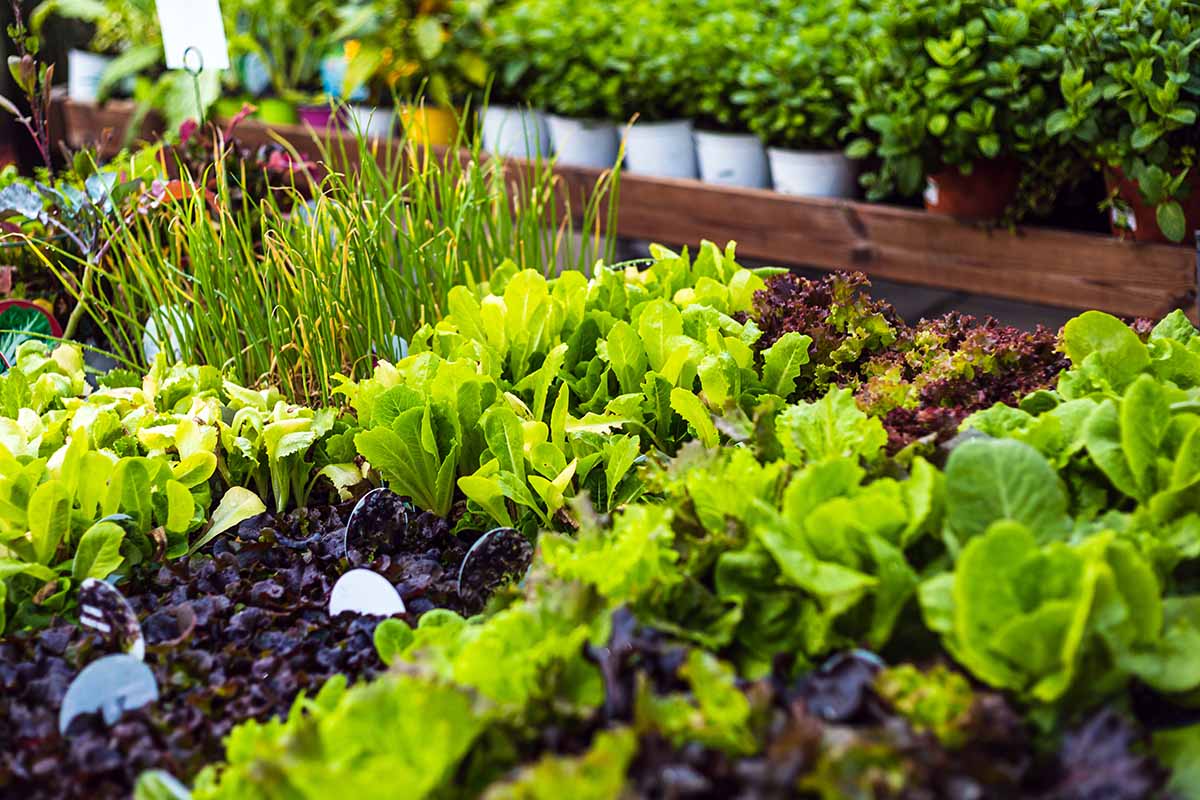
Companion planting with several mutually beneficial species grouped together will create not only a haven to protect the lettuce’s delicate foliage, but important dietary support for beneficial predatory insects and pollinators, and extra food for you as well.
Go into the next gardening season with confidence, knowing that your garden pals are functioning as a team.
So, what’s your plan? Tell us about it in the comments – you might inspire other gardeners! We love to see your garden photos and hear any questions you have, too. We’ll do our best to help.
Need more information about growing lettuce? We’ve got it! Check these titles out next to grow the best leafy greens yet:
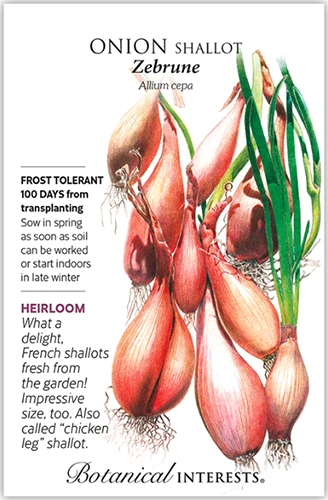


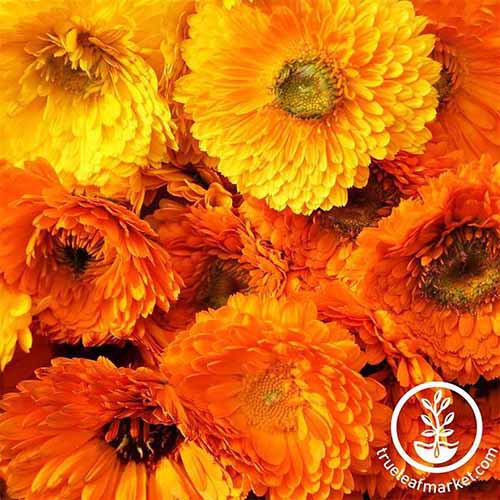
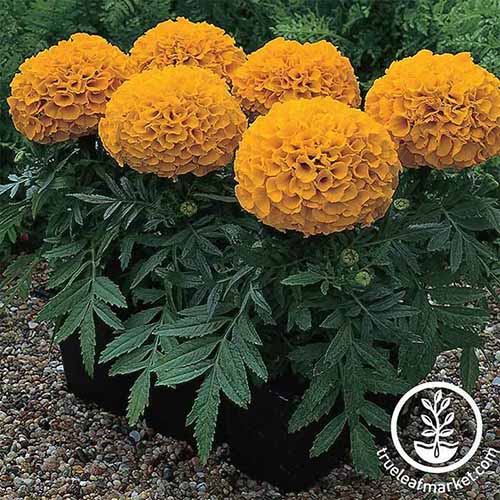
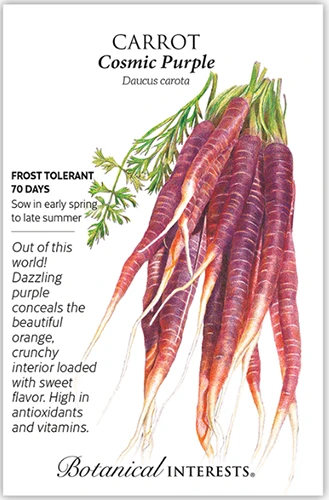
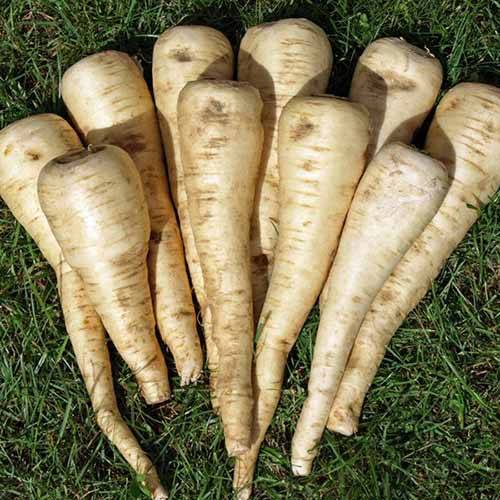
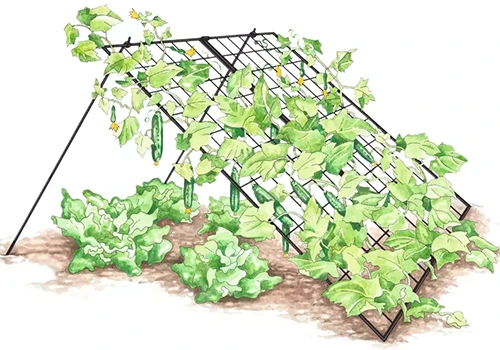
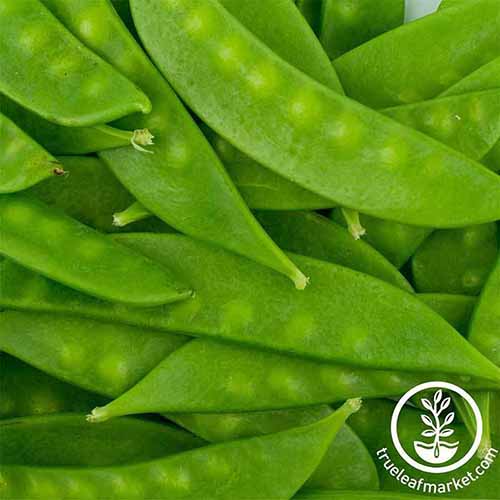
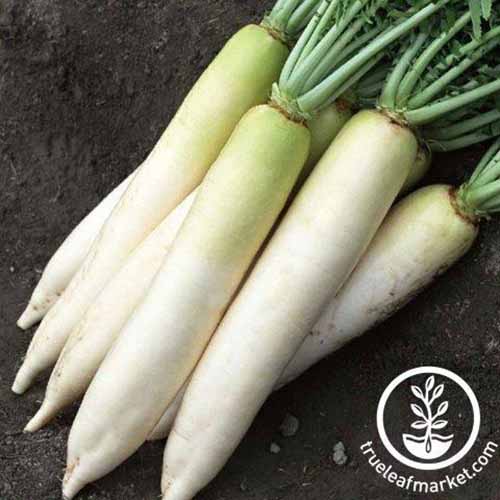
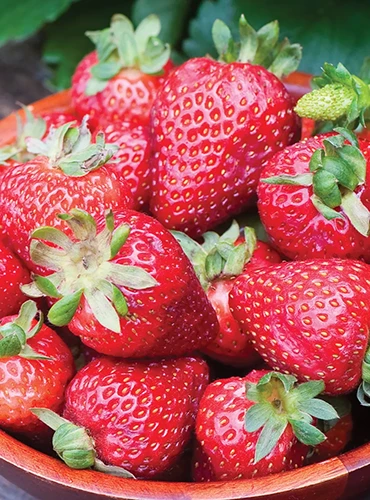

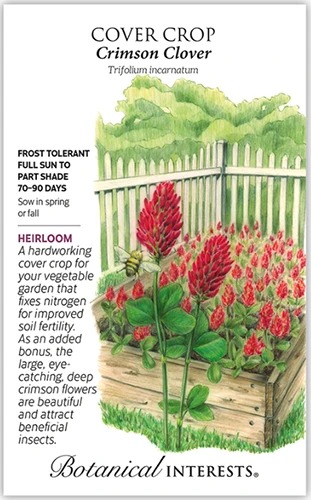

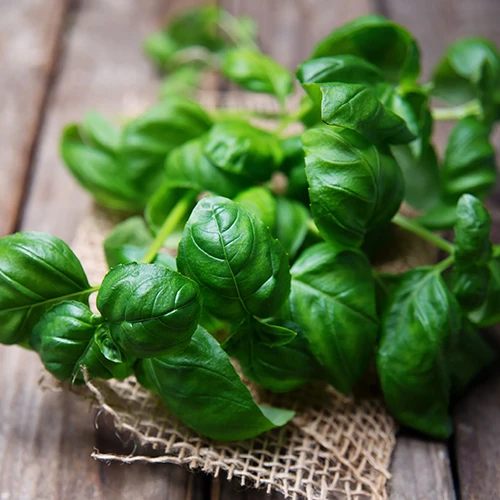
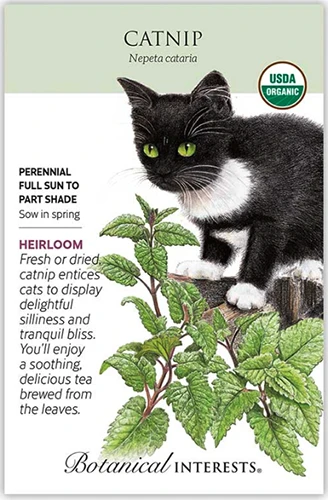
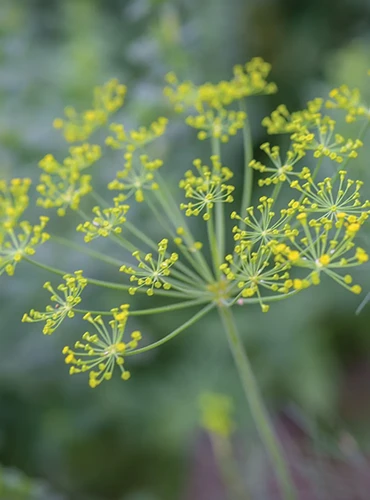
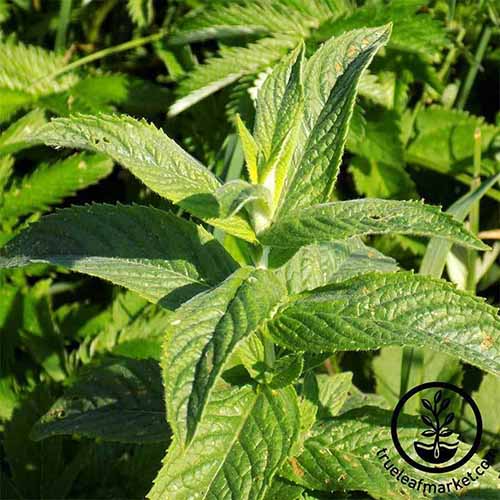
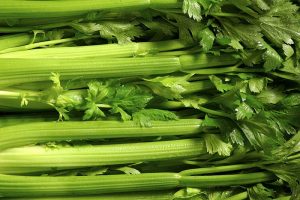

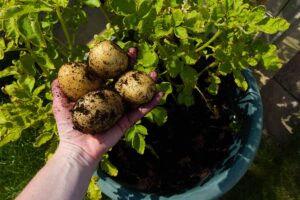
Awesome tips on gardening learnt so much very interesting I know now what I was doing wrong thank you for sharing your knowledge off to the garden center now I’m going to follow your useful tips thank you so much
You’re welcome Esther, very glad you found the article helpful. Happy gardening!